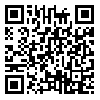BibTeX | RIS | EndNote | Medlars | ProCite | Reference Manager | RefWorks
Send citation to:
URL: http://tumj.tums.ac.ir/article-1-777-en.html
Background: ABO incompatibility hemolytic disease of the newborn is a common cause of clinical jaundice and causes two-thirds of the hemolytic disease in newborns. This study was undertaken to determine the frequency of ABO incompatibility hemolytic disease and its complications in newborns undergoing exchange transfusion.
Methods: This prospective and descriptive study was performed in jaundiced newborn infants during a three-year period. Inclusion criteria were: maternal blood type O, newborn blood type A or B, rising indirect hyperbilirubinemia in the first two days of life, positive immunohematologic test for newborns and exchange transfusion. Exclusion criteria were: incomplete information, other accompanying diseases that induce hyperbilirubinemia. All newborn infants received phototherapy before and after exchange transfusion. We did not use intravenous immunoglobulin, hemoxygenase inhibitor drugs and blood products before exchange transfusion.
Results: Double-volume exchange transfusion via umbilical cord catheter was performed in 96 patients, 19 (20%) of whom suffered from ABO incompatibility. Of these 19 newborns, two-thirds (13) were preterm infants. The minimum level of serum bilirubin was 10 mg/dl and the maximum serum bilirubin level was 35 mg/dl. In six patients (32%) serum bilirubin levels were >25mg/dl. The most common blood group was type A for newborns. Immunohematologic tests were positive in 84% of the mothers. ABO incompatibility hemolytic disease was the fourth and second most common reasons for blood exchange transfusion in preterm and term infants, respectively. Laboratory complications were more common than clinical complications. The etiology of 48% of the alloimmunization and 42% of the hemolytic disease in these newborns was ABO incompatibility.
Conclusions: Mothers with blood group O and newborns with blood group A or B with positive immunohematologic tests in first hours of life are at high risk for hemolytic disease. Therefore, in this high-risk group, further therapy including prophylactic phototherapy, intravenous immunoglobulin and intramuscular protoporphyrins are necessary to prevent severe jaundice and decrease the need for exchange transfusion.
| Rights and permissions | |
 |
This work is licensed under a Creative Commons Attribution-NonCommercial 4.0 International License. |





